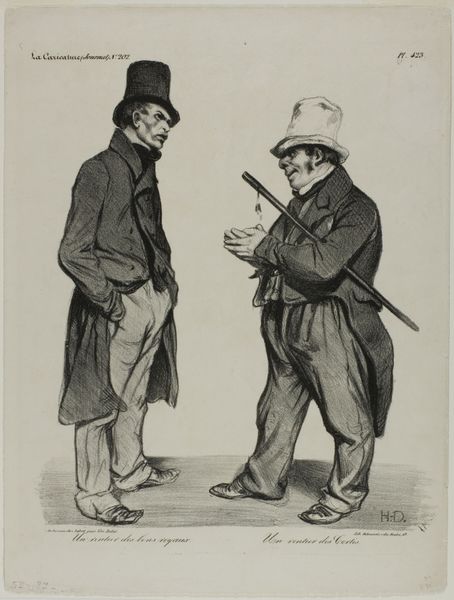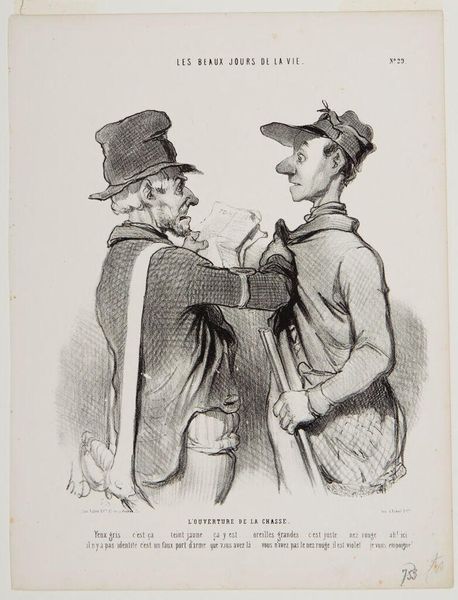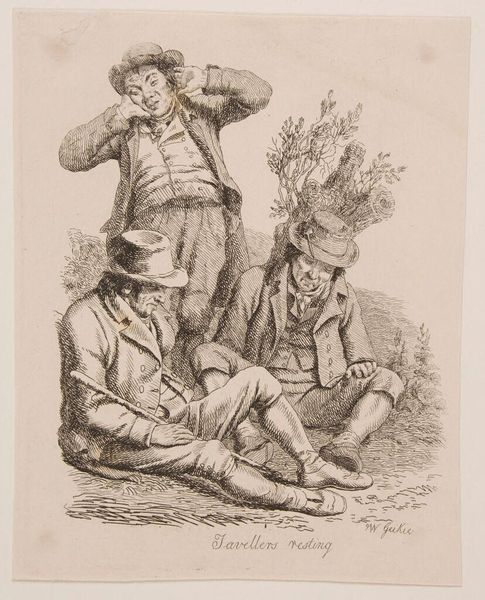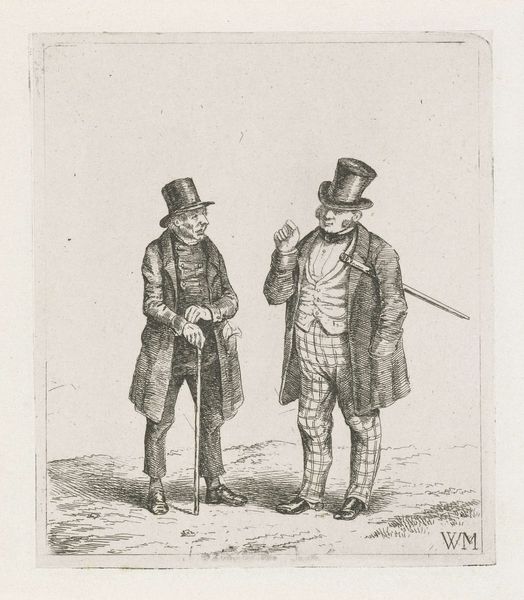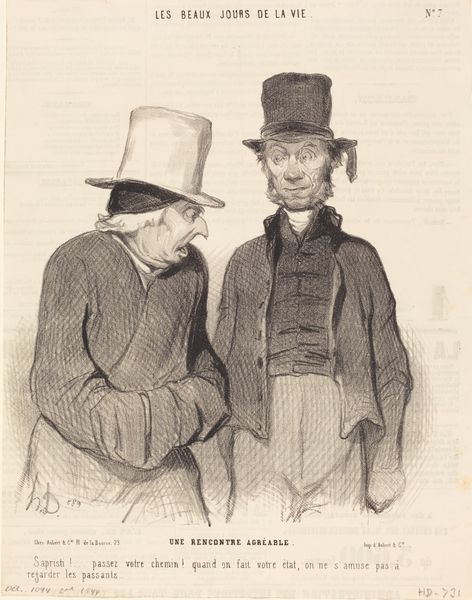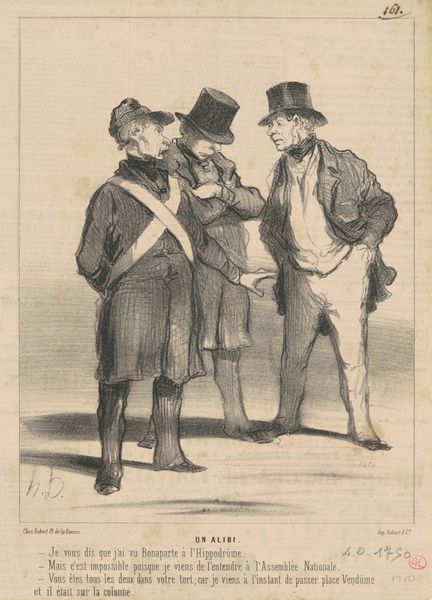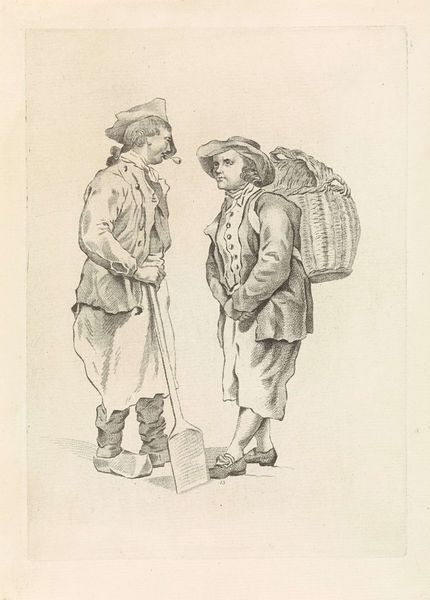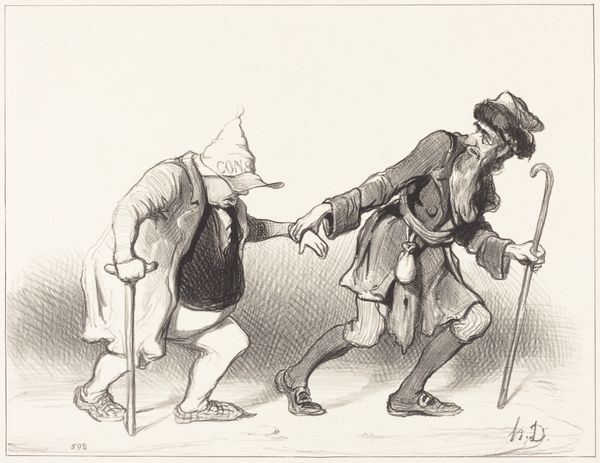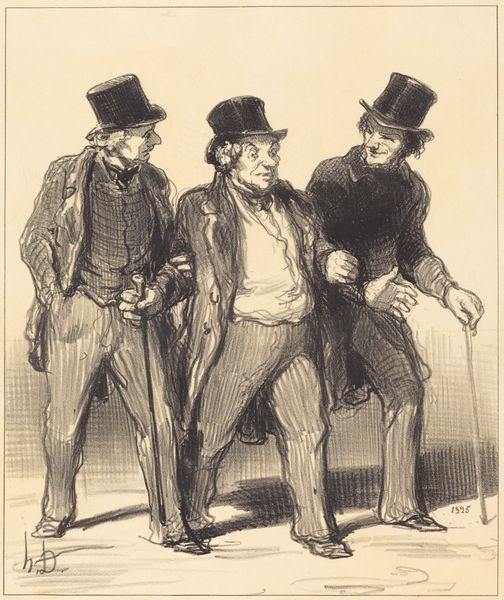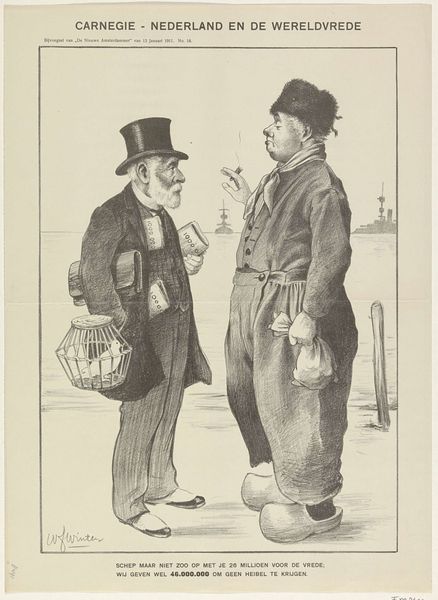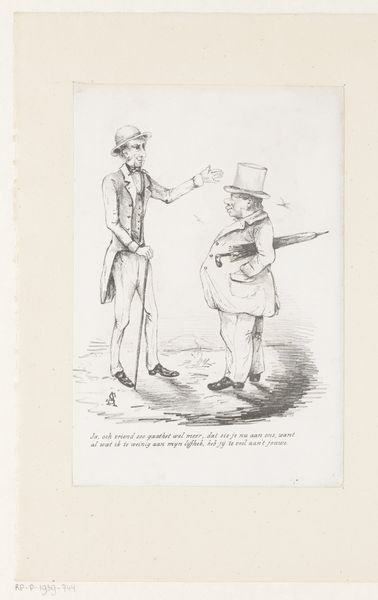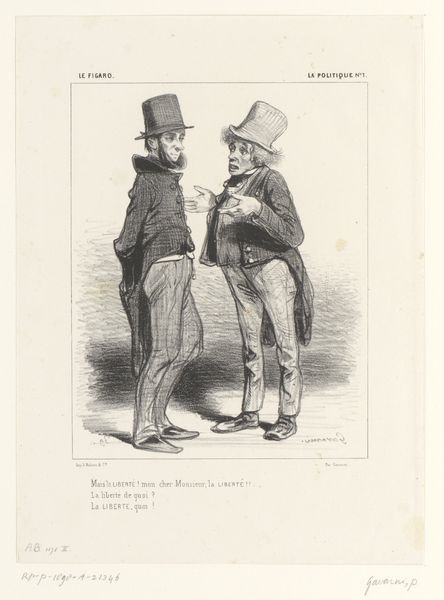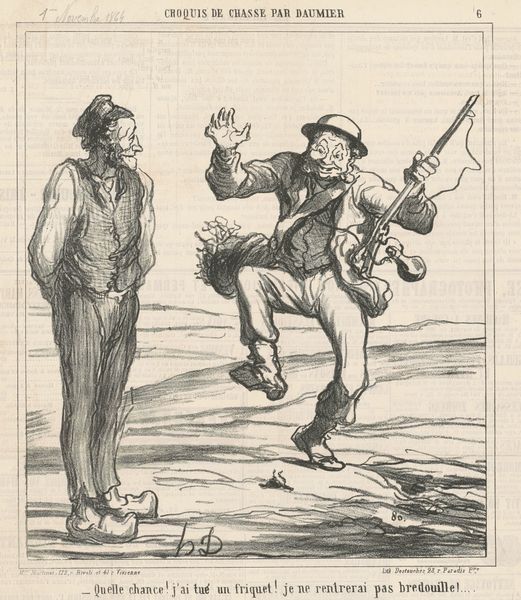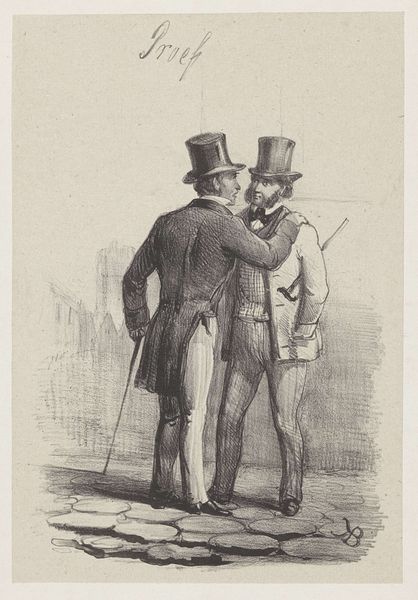
A Stockholder of the Good Royalty (A Stockholder of the Cortés) c. 19th century
0:00
0:00
Copyright: CC0 1.0
Editor: This is Honoré Daumier's, "A Stockholder of the Good Royalty (A Stockholder of the Cortés)." I'm struck by how these figures seem to embody two sides of a social dynamic. What can you tell me about the context of this caricature? Curator: Daumier often critiqued the bourgeoisie and political corruption. Consider how this image likely reflects the social tensions of post-revolutionary France, where wealth and power were concentrated in the hands of a few, like shareholders. Editor: So, the title is meant to be satirical? Are they really members of the "good" royalty? Curator: Exactly. The "good royalty" is laced with irony. Daumier uses caricature to expose the greed and hypocrisy he saw within the ruling classes. What do you make of their expressions? Editor: The contrast is stark. One appears menacing, the other smug. It gives the impression of two very different types of power. I see Daumier’s making a statement about societal inequality. Curator: Precisely. The print served as a piece of social commentary, influencing public opinion in a time of political upheaval. It makes you wonder about the power of art, doesn't it? Editor: Absolutely. This piece reminds us how art can shape our perception of history.
Comments
No comments
Be the first to comment and join the conversation on the ultimate creative platform.
